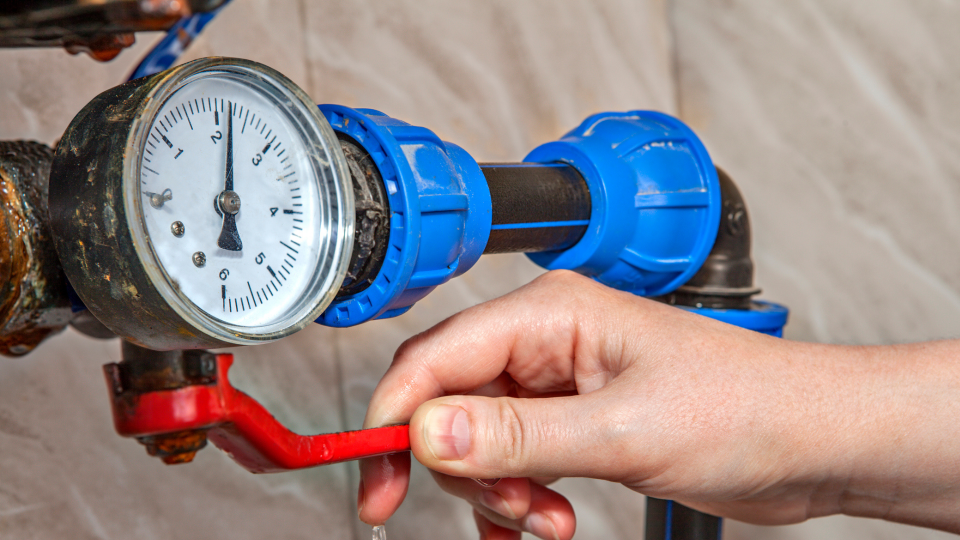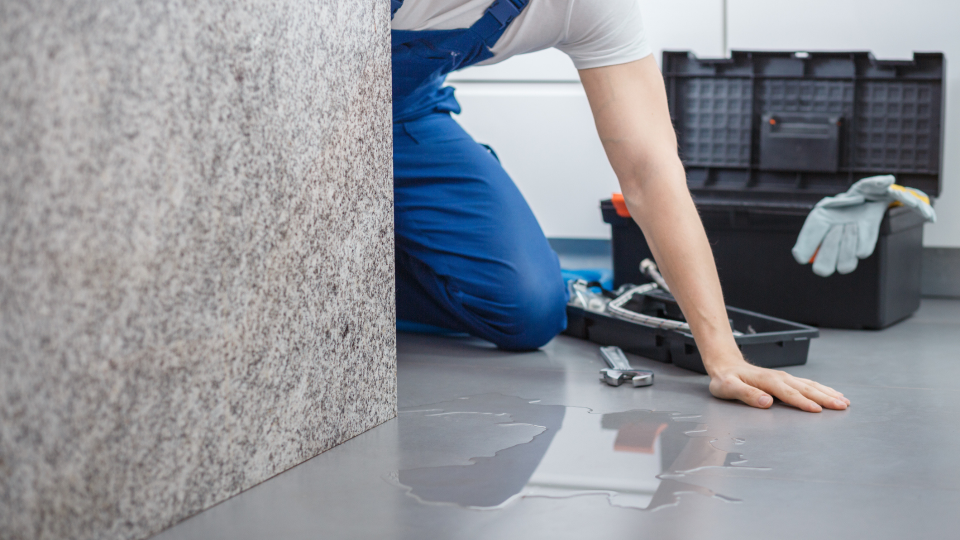Here's how to clean up water in your home after flooding

— Recommendations are independently chosen by Reviewed’s editors. Purchases you make through our links may earn us a commission.
Hurricane Ian slammed the state of Florida on Wednesday as a Category 4 storm, bringing severe flooding and damaging wind, causing extensive damage to property across the state. The storm has left thousands without power and has since made its way up the East Coast, making landfall in South Carolina on Friday as a Category 1 storm.
Flooding in severe cases can be significant and life-threatening and should be approached with the utmost caution. Minor flooding can damage electrical equipment, ruin appliances, destroy belongings and leave mold and sewage in its wake. While the historic flooding of Hurricane Ian is said to be a "500-year flooding event" according to Florida Gov. Ron DeSantis, flooding is common across the entire nation in general. Flood Defenders, a non-profit dedicated to advocating for better flood protection, states that flooding will become even more frequent in the coming years owing to rising sea levels. If that wasn’t enough, come winter, low temperatures can lead to frozen, and in turn, burst pipes. After a pipe gives out, unless water plumbing is shut off, flooding is likely to follow.
If flooding occurs, it's important to address the water in your home—fast. Before you begin, you'll need to make sure your home is safe to do so. If your home or area is safe to start cleaning up after storm aftermath or a recent pipe burst, here's what you should do to clean up before a professional service arrives.
►More: Your home has no water—here's how to cope
►Related: Got mold? Here’s what to do to protect yourself and your home
Find the source of the flooding

First thing's first: you’ll want to prevent even more water from entering your home. To do this, you will need to figure out where the water is coming from. If you see the first signs of a pipe burst like unexpected puddles or a change in water pressure in your faucets, act fast and turn off your home’s water.
Courtney Wilkinson, vice president of Benjamin Franklin Plumbing vice president, says your priority should be locating the shut-off valve by your home’s water meter. In many cases, the water meter is located in the basement or outside beneath a water meter grate.
Related: The best smart water leak detectors of 2022
“If you don’t have a key, use some sort of tool [to open] where you can shut it off,” Wilkinson recommends. A water key can be bought from a hardware store. If this isn’t an option, you can attempt to get it open with pliers and screwdrivers.
If your water meter has frozen over due to cold temperatures, don’t panic. You can try to circulate warm air from your home into the room where your water meter is located. But, if nothing gives, you may have to wait for a plumber to get out to your home to help.
If your house has begun to accumulate water because of a flash flood, then you should do your best to block off the water from entering your property. This can be done by creating a barrier around your house by stacking sandbags on top of one another. This will require a lot of sandbags, so another option is placing them in front of doors, garages and other openings to mitigate the chance of water seeping through.
Turn off your home’s power and gas
Water and electricity don’t mix, but the materials in water can conduct electricity. Things can quickly turn dangerous if floodwater makes contact with electrical systems and outlets.
To be safe, David Crow, General Manager of Benjamin Franklin Plumbing of Arlington, Texas recommends turning off your home’s power before starting any clean-up. “You [don’t want to be] searching around water that can come in contact with an electrical source,” he says. You should also shut it off even if you’re experiencing a power outage, as there is always a possibility the power may suddenly return.
Unless you’re able to turn off the main power from a dry location, the CDC recommends calling in an electrician to turn your power off to avoid any risk of injury.
The experts at Bob Vila also recommend shutting off your gas supply if you have gas appliances in your home. Find your home’s gas valve and shut off the main gas line to shut off all appliances. Like with your electricity, if you can’t access your gas line safely, it’s best to call in an expert to do so for you.
Call in an expert ASAP

Whether your flood is from pipes or rainwater, you’ll need an emergency plumbing service to assist in evaluating the plumbing damage done in your home. It’s best to call a service immediately to minimize the damage done, especially if your community is experiencing widespread damage and service is in high demand.
Wilkinson says, “Water can damage a house very fast, and it doesn’t take a lot to make a lot of damage.”
Crow also recommends immediately contacting a clean-up and restoration service. Water damage restoration services can help evaluate and fix the damage caused by prolonged water exposure.
To find a reputable service, the National Center for Healthy Housing recommends researching options on restoration industry websites like The Restoration Industry Association.
It’s also important to know that if your home is not dried out within 22-48 hours, the EPA says you should assume there is mold growth happening in your home.
At this point, cleaning up may become dangerous to do on your own, as mold exposure can lead to irritation, allergic reactions, and even infection in people with weakened immune systems. In this case, consult a qualified professional to inspect and restore the damage in your home.
Wear proper protective gear if you have it
It’s important to keep yourself protected while cleaning, especially if there’s a chance that you may be exposed to mold or mildew.
The EPA recommends donning protective gear before cleaning up your home. If you have safety goggles and any sort of heavy-duty rubber gloves, go ahead and put those on. Wear work boots if you have them.
If you can get access to an N95 respirator—which can commonly be found at hardware stores again—wear that as well to avoid inhaling contaminants that breed in standing water.
If your home is flooding to the point where you believe you or others could be in danger, seek safe shelter. If advised to evacuate by officials in your community, do so immediately. But take safety precautions—do not swim, walk or drive through flood waters, according to Ready.gov, an official website of the United States Department of Homeland Security. It doesn't take much water to create danger—just six inches of moving water can knock you down and 12 inches can sweep away your car. Additionally, you'll want to avoid bridges over fast-flowing water and potentially move to higher ground depending on the type of flood.
Get the Gateway Safety Protective Glasses at Amazon for $7.03
Get the Wells Lamont Heavy Duty Work Gloves at Amazon for $6.99
Get the 3M N95 Disposable Multi-Purpose Respiratory Mask (25-Pack) at The Home Depot for $41.97
Begin clearing out standing water

First, focus on getting as much standing water out of the house as possible. Try to get the house as clean and dry as possible before the 22-48 hour period that can cause mold and mildew growth is up.
If the water is only in a portion of your home, your goal is to keep it from spreading to other rooms, especially if you have wood floors and you’re worried about water getting underneath the flooring, says Crow.
If you have power, use a wet-dry vacuum (otherwise known as a shop vac) like the Vacmaster Shop Vacuum to extract the water from floors, carpets and hard surfaces. If your home has a sump pump, this will automatically help push water and moisture out of your home.
If your power is out, you’ll still want to try to remove the water quickly, so it’s time to get a little creative with your clean-up method.
Crow says, “Use anything that’ll absorb water—all the towels you have, comforters off your bed, anything like that.”
Crow also recommends using a mop to soak up as much water as possible. If you’re able to get to a hardware store, you can pick up a squeegee to physically push the water out towards your garage or porch.
Try to dry out what’s most susceptible to water damage
As we’ve mentioned, water damage happens fast. For this reason, Crow and Wilkinson recommend determining the areas of your home that you believe need to be protected from water damage.
“Anything with a porous surface is going to soak water up—this includes sheetrock, baseboard, and wood,” says Wilkinson. Focus your water-cleaning efforts on materials like this first. If you can save some or most of your flooring or walls from encroaching water, that is a best-case scenario.
For materials like sheetrock, also known as drywall, if the water damage isn’t significant, restoration service Restoration Local recommends using a wet-dry vacuum. It could potentially cause some damage on the walls, but it’s better than having to completely replace your drywall. You can also use large towels to blot the walls and collect moisture.
If significant water damage from heavy flooding occurs, your drywall most likely won’t make it. At this point, experts recommend punching out holes to allow water and moisture to escape since the damaged drywall will need to be replaced regardless.
Throw away what can’t be dried
After removing as much water as possible from the home, begin to evaluate the damage done to your furniture and personal items. Creating two piles—one for salvageable items and another for stuff you just need to toss. We know it can be hard to discard items of sentimental value, but it’s important to mitigate your exposure to mold, which can threaten your health.
Paper products, food and electronics that are water-damaged will most likely need to be thrown away. Upholstered furniture and rugs may be able to be restored or cleaned, but will require attention from an expert quickly.
Get expert shopping advice delivered to your phone. Sign up for text message alerts from the deal-hunting nerds at Reviewed.
The product experts at Reviewed have all your shopping needs covered. Follow Reviewed on Facebook, Twitter, Instagram, TikTok or Flipboard for the latest deals, product reviews and more.
Prices were accurate at the time this article was published but may change over time.
This article originally appeared on Reviewed: How to clean up water in your home from flooding, burst pipe

